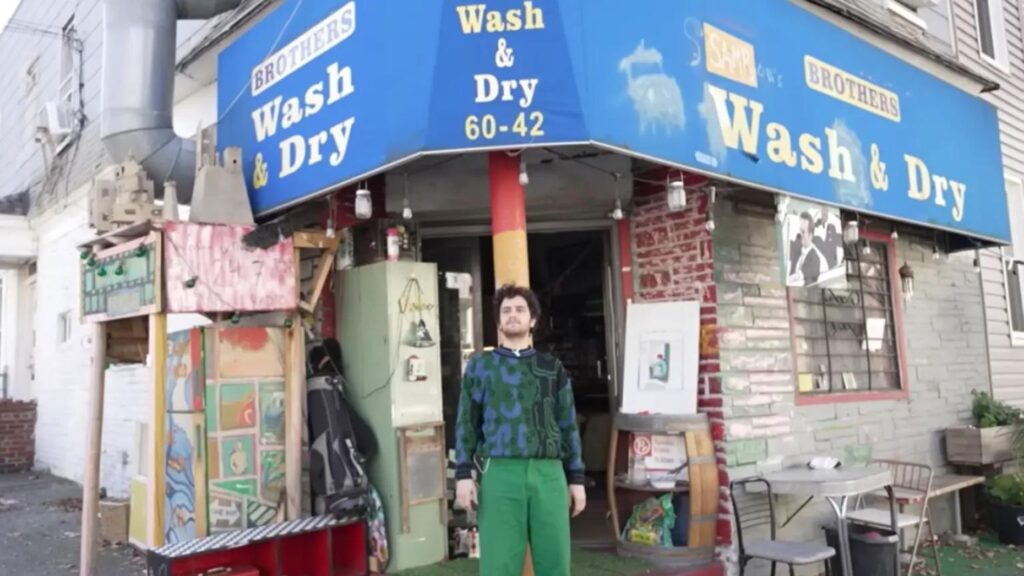BELLEVUE — Reginald Carey, 62, sat down at his computer next to shelves of books he’s owned since he lived on the steps of a church in South Lake Union. Back then, he protected them from rain in a metal trash can turned on its side.
He’s writing a book. He’s been working on it for 10 years, but since he moved into his own apartment in June, he feels like he’s turning a corner.
“This place gives me the sense that I can accomplish this,” Carey said.
Most of his rent is paid by an emergency housing voucher, one of over 1,300 rental subsidies that housing authorities in King County received through the American Rescue Plan directed at helping alleviate the nation’s homelessness crisis.
Six months after the county received the vouchers in May 2021, only 10 had been used to move people into housing — one of the worst rates in the country in a region with one of the largest populations of people in need of housing. Officials said they were delayed by a tightening rental market, the pandemic and bureaucracy.
Now, Seattle and King County have used all their vouchers and might receive more from areas that haven’t seen the same dramatic turnaround. The housing and homelessness authorities here have one of the best lease rates in the country.
In December, U.S. Deputy Secretary of Housing and Urban Development Adrianne Todman visited Seattle to celebrate.
To achieve such progress, the Seattle and King County’s housing agencies had to dedicate more people and funds to help people find housing, as well as simplify application and move-in processes for applying.
“Housing people is complex work, building trusted partnerships takes time and implementing a new program is never easy, but over time the results speak for themselves,” wrote King County Housing Authority spokesperson Rhonda Rosenberg.
Navigating bureaucracy
When King County began receiving emergency housing vouchers from the federal government, the then-new Regional Homelessness Authority, tasked with identifying who should receive a voucher, had just three employees.
It took weeks to create what the authority calls an equity-driven formula to identify possible candidates, and then recipients had to navigate a labyrinth of bureaucracy.
The authority made a deal with over 80 service providers: they would get to refer their clients for vouchers, and in exchange, the authority’s front-line workers would provide support throughout the application and move-in process and for the first year of the lease.
“We worked with service providers to build on the trusted relationships they had already established with people experiencing homelessness, and that relational framework made all the difference,” said King County Regional Homelessness Authority CEO Marc Dones in a statement.
When Carey received his voucher in May 2022, he started meeting with his case manager, Megan Ibarra, every other day to browse rental websites. Together, they sorted through apartments that were close to bus routes, a bank and a grocery store. She helped him apply online, communicate with landlords and even helped him move his belongings to his new home.
Without Ibarra, “I may have given up,” Carey said.
For people like Carey who have lived outside for years, applying for housing is not a simple task. Homeless people often have a criminal record, an eviction history, poor or nonexistent credit or unpaid rent owed to previous landlords.
Many also lack trust in a housing system that has failed them multiple times over. Carey said he initially “didn’t expect much” from the housing voucher program, given that he had applied for another housing voucher program multiple times and never heard back.
Even with case managers helping voucher recipients navigate the housing process, it took more time than housing authority officials initially expected and more support for recipients to start signing leases.
On average, it has taken voucher recipients in King County three months to find an apartment.
By the end of 2021, Seattle and King County Housing Authorities staffed up additional housing navigators and counselors that provided essentially another case manager during the housing application process.
That level of support might help explain why King County has pulled ahead in utilization rates. The Los Angeles Times reported that this kind of individualized support is absent in areas like San Francisco, which has used just half its vouchers.
Money was key
This level of support hadn’t existed before, and it took some time to stand up, the housing authorities said. For example, the Seattle and King County housing authorities introduced a new application form for emergency vouchers intended to reduce the amount of client paperwork in mid-2022, a full year after the program began.
But some service providers said money made the most difference.
The housing authorities provided each voucher recipient $1,000 to cover application fees, deposits and moving expenses to overcome financial barriers that can stand in the way of low-income renters’ ability to find housing.
In January 2022, the King County Housing Authority raised the amount of rent that a voucher would pay for, by $112 for a one-bedroom, “in direct response to [Emergency Housing Voucher] leasing difficulties” using the agency’s own flexible funding, according to spokesperson Rosenberg.
Seattle Housing Authority said it made a similar adjustment around the same time, adding that housing authorities regularly update their vouchers’ subsidy amounts to fit market conditions.
The majority of leases were signed after that.
“When that happened, it really allowed us to house folks more rapidly,” said Febben Fekadu, director of housing at street outreach nonprofit REACH, which helped refer more than 80 people, mostly living in encampments, to the program.
Groups that face disproportionate rates of homelessness make up a larger-than-average percentage of lessees. More than 40% of Seattle and King County’s emergency housing vouchers have gone to Black people, a slight increase from other voucher programs, and 7% went to American Indians or Alaska Natives, more than doubling the rate at which those groups receive other vouchers.
Service providers that serve predominantly people of color or who are LGBTQ+ could refer more people to receive vouchers. And, they must provide support even after someone moves in, which helps stabilize people who face the highest obstacles to permanent housing.
Since Carey moved into his apartment in June, Ibarra said he calls her three times a week with questions, mostly about technology. Once, she said she mediated a conflict between him and his landlord about utility payments. Part of her job now is to prevent Carey from being evicted.
More vouchers needed?
Seattle and King County Housing Authorities have helped almost too many people find housing with their emergency housing vouchers.
Seattle and King County received 1,260 vouchers from the federal housing agency, but issued hundreds more expecting that not everyone would successfully find an apartment.
More than 1,330 have already used their vouchers to sign a lease, and hundreds more people are still looking for apartments that the housing authorities may be on the hook for.
Renton Housing Authority has used about 80% of the 54 vouchers it was allocated.
Rosenberg, with the King County Housing Authority, said there was always going to be a risk of either issuing too many or too few vouchers, and the agency didn’t want to risk leaving resources on the table when there are so many people in need of housing.
The housing authorities say they have enough flexible funding to cover all of the vouchers they’ve issued, and they expect that within a few years, the number of people with an emergency housing voucher will fall. People who receive a housing voucher typically move on from the program within five to seven years.
HUD also said it plans to take back emergency housing vouchers from housing authorities that were unable to use them and redistribute them to other authorities that used at least a majority of theirs like Seattle, Renton and King County.
The department had said this process would be complete by February.
















